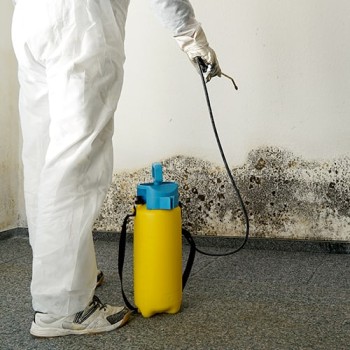Say goodbye to pesky basement mold once and for all with our expert tips for effective removal. Mold growth in basements is not only unsightly but also poses health risks to you and your family. That’s why it’s crucial to address this issue promptly and effectively.
In this article, we will guide you through the steps to banish basement mold and prevent it from coming back. Our expert tips, derived from years of experience and industry knowledge, will help you tackle this common problem head-on.
From identifying the type of mold to choosing the right cleaning products, we’ve got you covered. We’ll also discuss the importance of proper ventilation and moisture control, as well as share preventive measures to keep your basement mold-free in the future.
Don’t let basement mold dampen your spirits or compromise your health. With our expert advice, you can create a cleaner, healthier living environment for you and your loved ones. Say goodbye to the mold and hello to a fresh, mold-free basement.
Understanding Basement Mold
Mold is a type of fungus that thrives in damp, dark environments, making basements a perfect breeding ground. Understanding the basics of basement mold is essential in effectively dealing with the problem. Mold spores are present everywhere, but they only become a problem when they find a moist surface to grow on.
Basement mold can appear in various forms, including black mold, green mold, and white mold. Each type has its own characteristics and potential health risks. It’s important to identify the type of mold you’re dealing with before taking any action.
To identify basement mold, look out for visible signs such as discoloration, a musty odor, or any allergy-like symptoms you or your family may experience when spending time in the basement. If you suspect mold growth, it’s crucial to take immediate action to prevent further damage and potential health issues.
The Dangers of Basement Mold
Basement mold is not just an aesthetic issue. It poses serious health risks to you and your family. Exposure to mold can trigger allergic reactions, respiratory problems, and even exacerbate existing conditions such as asthma.
Mold spores can become airborne and circulate throughout your home, leading to indoor air pollution. Prolonged exposure to mold can have long-term health effects, especially for individuals with weakened immune systems or pre-existing respiratory conditions.
Additionally, mold can cause structural damage to your home if left untreated. It can weaken the foundation, compromise the integrity of walls and floors, and lead to costly repairs. Taking prompt action to remove basement mold is essential for both your health and the well-being of your home.
Signs of Basement Mold
Identifying the signs of basement mold is crucial for effective removal. Here are some common signs that indicate the presence of mold in your basement:
- Visible Mold Growth: Look out for black, green, or white patches on walls, ceilings, or floors. Mold can also grow on furniture, carpets, and other porous surfaces.
- Musty Odor: If your basement has a persistent musty smell, it’s likely a sign of mold growth. The odor is caused by volatile organic compounds (VOCs) released by mold.
- Water Stains: Dark, discolored patches on walls or ceilings are often indicative of water intrusion and potential mold growth.
- Allergy Symptoms: Frequent sneezing, coughing, itchy eyes, and respiratory issues when spending time in the basement can be signs of mold-related allergies.
- Excessive Humidity: Basements with high humidity levels are more prone to mold growth. Condensation on windows or dampness on walls are indicators of elevated humidity.
If you notice any of these signs, it’s important to take immediate action to prevent further mold growth and potential health hazards.
Causes of Basement Mold
Understanding the causes of basement black mold is essential for effective prevention and removal. Here are some common factors that contribute to mold growth in basements:
- Excessive Moisture: Basements are prone to moisture due to their location below ground level. Water seepage, leaks, or high humidity levels can create a damp environment ideal for mold growth.
- Poor Ventilation: Inadequate airflow in basements can trap moisture and contribute to mold growth. Proper ventilation is crucial for maintaining a dry and mold-free environment.
- Lack of Light: Mold thrives in dark environments. Basements with limited natural light or inadequate artificial lighting are more susceptible to mold growth.
- Organic Materials: Mold feeds on organic materials such as wood, paper, and fabrics. Basements with excessive clutter or porous materials provide ample food sources for mold to thrive.
- Foundation Issues: Cracks or leaks in the foundation can allow water to enter the basement, leading to moisture buildup and mold growth.
By addressing these underlying causes, you can significantly reduce the risk of basement mold and create a healthier living space.
Preventing Basement Mold
Prevention is key when it comes to basement mold. By implementing these preventive measures, you can minimize the risk of mold growth and keep your basement mold-free:
- Control Moisture: Address any water leaks, fix plumbing issues, and ensure proper drainage away from your home’s foundation. Use a dehumidifier to maintain optimal humidity levels in your basement.
- Improve Ventilation: Install exhaust fans or vents to improve airflow in your basement. Open windows regularly to allow fresh air to circulate.
- Use Mold-Resistant Materials: When renovating or finishing your basement, choose mold-resistant materials such as mold-resistant drywall, paints, and insulation.
- Keep the Basement Clean: Regularly clean and declutter your basement to minimize potential mold food sources. Remove any damp or water-damaged items promptly.
- Monitor Humidity Levels: Use a hygrometer to monitor humidity levels in your basement. Keep it between 30-50% to discourage mold growth.
By following these preventive measures, you can create an environment that is inhospitable to mold and reduce the likelihood of future mold problems.
DIY Basement Mold Removal Methods
If you discover mold in your basement, you may consider removing it yourself. While small-scale mold removal can be done DIY, it’s important to take proper precautions and follow these steps:
- Safety First: Wear protective clothing, gloves, goggles, and a mask to avoid direct contact with mold spores and prevent inhalation.
- Containment: Seal off the affected area to prevent mold spores from spreading to other parts of your home. Use plastic sheets and tape to create a barrier.
- Moisture Control: Identify and address the source of moisture to prevent further mold growth. Fix leaks, dry out the area, and ensure proper ventilation.
- Cleaning: Depending on the extent of the mold growth, use appropriate cleaning solutions such as a mixture of bleach and water, hydrogen peroxide, or vinegar. Scrub the affected surfaces thoroughly.
- Proper Disposal: Double-bag and seal any materials or items contaminated with mold. Dispose of them according to local regulations.
It’s important to note that DIY mold removal is only recommended for small areas (less than 10 square feet). If you’re dealing with extensive mold growth or are uncertain about the type of mold, it’s best to consult a professional mold removal service.
Professional Basement Mold Removal Services
For larger mold infestations or if you want to ensure thorough and safe removal, hiring a professional basement mold removal service is recommended. Here’s what to look for when choosing a reputable company:
- Certifications and Credentials: Verify that the company is certified and has trained professionals who specialize in mold remediation. Look for certifications such as the Institute of Inspection, Cleaning and Restoration Certification (IICRC) or the National Association of Mold Professionals (NAMP).
- Experience and Expertise: Choose a company with a proven track record and extensive experience in basement mold removal. They should have a deep understanding of different mold types and effective removal techniques.
- Comprehensive Assessment: A reputable company will conduct a thorough assessment of your basement to identify the extent of the mold growth and any underlying issues contributing to the problem.
- Safe and Effective Removal: Ensure that the company follows proper protocols for containment, removal, and disposal of mold-infested materials. They should use industry-standard equipment and techniques to eliminate mold effectively.
- Preventive Measures: A reliable mold removal service should provide recommendations for preventing future mold growth in your basement. This may include moisture control solutions, ventilation improvements, or advice on maintaining a clean and dry environment.
Before hiring a professional service, it’s advisable to get multiple quotes, read reviews, and ask for references to ensure you choose the best company for your specific needs.
Maintaining a Mold-Free Basement
Once you’ve successfully removed basement mold, it’s important to take preventive measures to maintain a mold-free environment. Here are some tips to keep your basement mold-free in the long term:
- Regular Inspections: Conduct routine inspections of your basement for any signs of mold growth or moisture issues. Address any problems promptly to prevent mold from taking hold.
- Monitor Humidity: Continue monitoring humidity levels in your basement and take action if they exceed the recommended range. Use a dehumidifier if necessary.
- Proper Ventilation: Maintain proper airflow in your basement by using exhaust fans, opening windows regularly, and keeping air vents unobstructed.
- Address Water Intrusion: If you notice any water leaks or signs of water intrusion, address them immediately. Fix plumbing issues, seal cracks, and ensure proper drainage away from your home.
- Regular Cleaning: Keep your basement clean and clutter-free. Regularly vacuum, dust, and wipe down surfaces to minimize potential food sources for mold.
- Professional Inspections: Consider scheduling professional mold inspections on a periodic basis, especially if you’ve had previous mold issues or live in an area prone to high humidity.
By consistently implementing these maintenance practices, you can enjoy a mold-free basement and peace of mind knowing that you’re taking proactive steps to prevent future mold growth.
Conclusion
Banishing basement mold requires a combination of knowledge, preventive measures, and prompt action. By understanding the basics of basement mold, its dangers, and the causes behind its growth, you can effectively tackle this common problem.
From DIY removal methods to professional mold removal services, there are various options available depending on the size and severity of the mold infestation. Choosing the right approach and taking the necessary precautions will ensure a safe and successful removal process.
Remember, prevention is key to keeping your basement mold-free in the long term. By controlling moisture, improving ventilation, and maintaining a clean environment, you can create a healthier living space for you and your loved ones.
Don’t let basement mold dampen your spirits or compromise your health. With our expert advice, you can banish basement mold forever and enjoy a fresh, mold-free basement for years to come. Say goodbye to the mold and hello to a healthier living environment.





No comment yet, add your voice below!